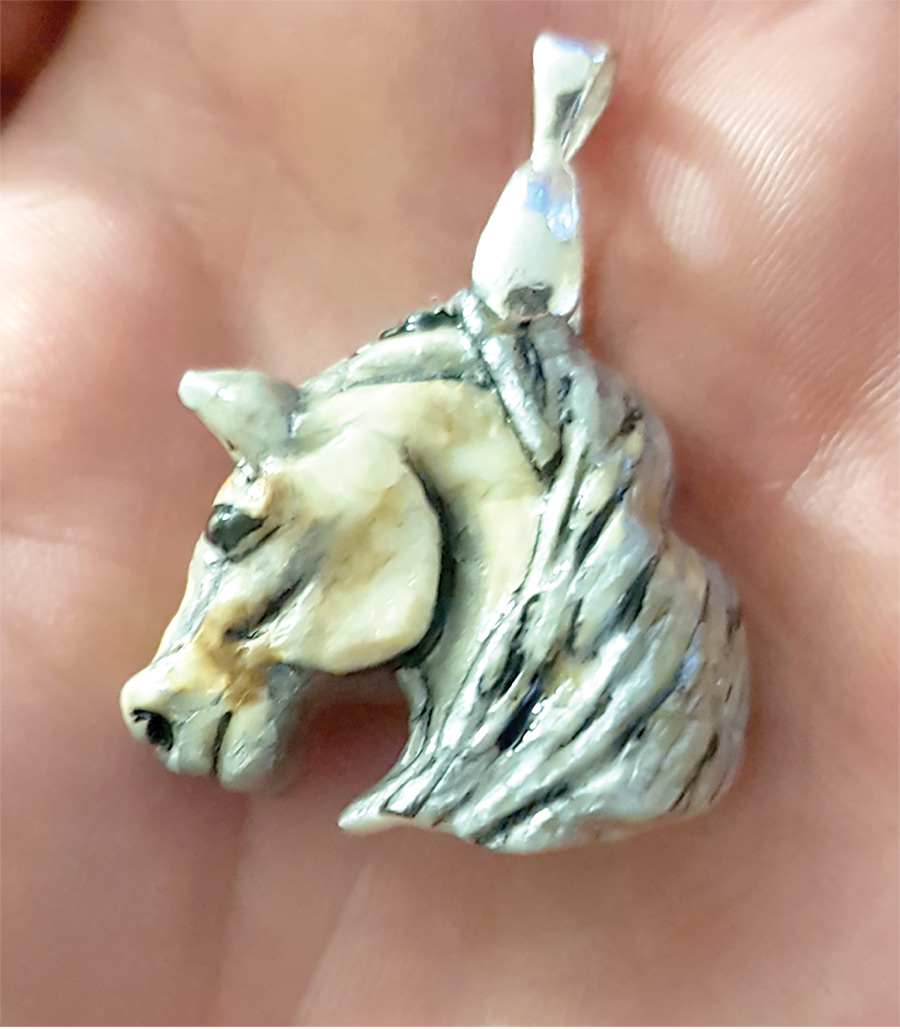HILLSBURGH – Briar Perkins, a local horse woman, creates hand-crafted horse jewelry using horse teeth.
While the “unusual” factor is initially high, it is important to understand that horse teeth are a form of sustainable ivory, which has been used for centuries to make for piano keys, tools and jewelry.
Elephant and walrus tusks were originally large incisor teeth and as these mammals evolved, their tusks (former teeth) grew on the outside of their mouths.
Ivory sourced from tusks is very controversial and now outlawed in many countries.
Carving in ivory is a meticulous process.
Perkins begins her process by looking at the tooth, which she collects from a veterinarian friends who does equine dentistry.
She uses its natural shape to influence her carvings, leaving natural indentations and curves as part of her finished work.
The process then begins by sanding down the outside of the tooth to remove any staining and to expose a clean surface.
Using diamond-tipped tools, she proceeds slowly and then paints in colour and detail using a cat whisker.
When the piece is complete, Perkins applies a clear coat finish. The completed carving is attached to a clasp or setting made from silver.
How does one become a modern-day ivory carver?
Perkins grew up on a Hillsburgh horse farm. As a young girl, she joined Pony Club and was a competitor and champion (twice) internationally in the Mounted Games.
As a teen, Perkins worked at Woodlands Farm and one morning while emptying a water bucket for the young thoroughbreds, she discovered a tooth. Horses, like all mammals, loose their baby teeth naturally.
As Perkins looked the tooth over, it sparked the idea for her first ivory carving: a horse-head pendant.
Perkins studied fine arts for two years at the University of Guelph and then worked at Woodbine Racetrack, galloping and training horses.
She connects to her love of horses through her carvings. Her work has included pendants, earrings, bracelets and tie pins, with some requiring only a few hours and others taking up to several days to complete.
Briar Perkins’ jewelry sells for $40 to $250 per item depending on the complexity of the image, size and setting.
Perkins has received commissions from all over Canada, the U.S. and most recently one from England. Horse owners often collect teeth from their own animals and make special requests.
Perkins is currently utilizing social media to spread the word about her artwork.
Using an art form straight from the horse’s mouth, Perkins’ craft is creating memorable and unique artwork.




